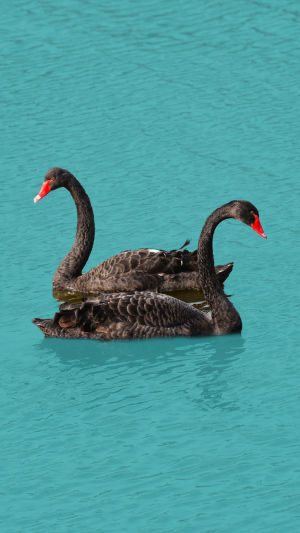The appearance of a Black Swan is enough to turn everything upside down. A Black Swan event refers to a rare and significant event.
Until the 17th century, Europeans were unaware of the existence of black swans in the world and believed that all swans were white until the discovery of black swans in Australia revealed the limits of their knowledge.
Tens of thousands of white swans, and thousands of years of history, supported the conclusion that all swans are white, but the moment a black swan appears, this conclusion is completely overturned.
The term 'black swan event' has been used ever since to describe events that are unpredictable and extremely rare, but when they occur, they can have a disruptive effect.
Most swans, during the breeding season, are very aggressive and refuse to let other swans into their territory. The exception is the Black Swan, which often nests elsewhere. The eggs of the Black Swan are not black, but greenish-white and take between 35 and 45 days to hatch.
Black swans are very adaptable and the cygnets are able to feed and fend for themselves just after hatching. However, they can only swim in shallow water at this stage and if they want to go into deeper water, they will have to ride on the back of their parents.
The Black Swan's parents will take care of the cygnets until they are seven or eight months old and help them settle into their own territory before leaving them to live independently.
The courtship behavior of Black Swans is very interesting. The male swan will approach the female with his wings and chin, accompanied by a guttural call, if he is attracted to her. The female responds with a call and then they alternate heads in an upright position.
After a successful pairing, the Black Swans are inseparable and are particularly affectionate as they play in the water. If they spot a rival approaching, they flap their wings vigorously and raise their necks vertically with their bills downwards. Black swans have a short life span, living up to 40 years.
What are the differences between the mysterious black swan and the holy white swan?
1. First of all, the difference in feathers can be seen with the naked eye, the black swan's feathers are naturally black. It is also a relatively rare species of swan, distributed in Australia and other countries. Although they both belong to swans, there is a big difference in their habits.
2. Secondly, there is a difference in outlook on choosing a mating partner. It is difficult for white swans to choose a mate. But it is easier for a black swan to choose a mate. If a Black Swan is widowed, it will soon be joined by another, and will not be faithful to love at all.
Biologically, however, this is normal for Black Swans, as their numbers are so small that if they do not "remarry" in time to give birth, they will not be able to ensure the continuity of their species. In contrast, the large number of white swans, some of which are single, does not affect the reproduction of the population.
3. The third is that their hatching situation is different. Black swans breed every year in spring and autumn, a healthy black swan couple can breed 40 to 50 babies a year, compared to white swans, black swans have a higher hatching rate and survival rate of baby geese, which is also conducive to the reproduction of the race.
The Black Swan is a flock animal, rarely alone, and its diet is based on a variety of algae and aquatic plants. They are 'nomadic' and when the weather is unsuitable, they choose to move, with thousands of black swans migrating at the same time. Most black swans migrate because they don't have enough food, otherwise, they are one of the more sedentary swans, and other species migrate more often.





